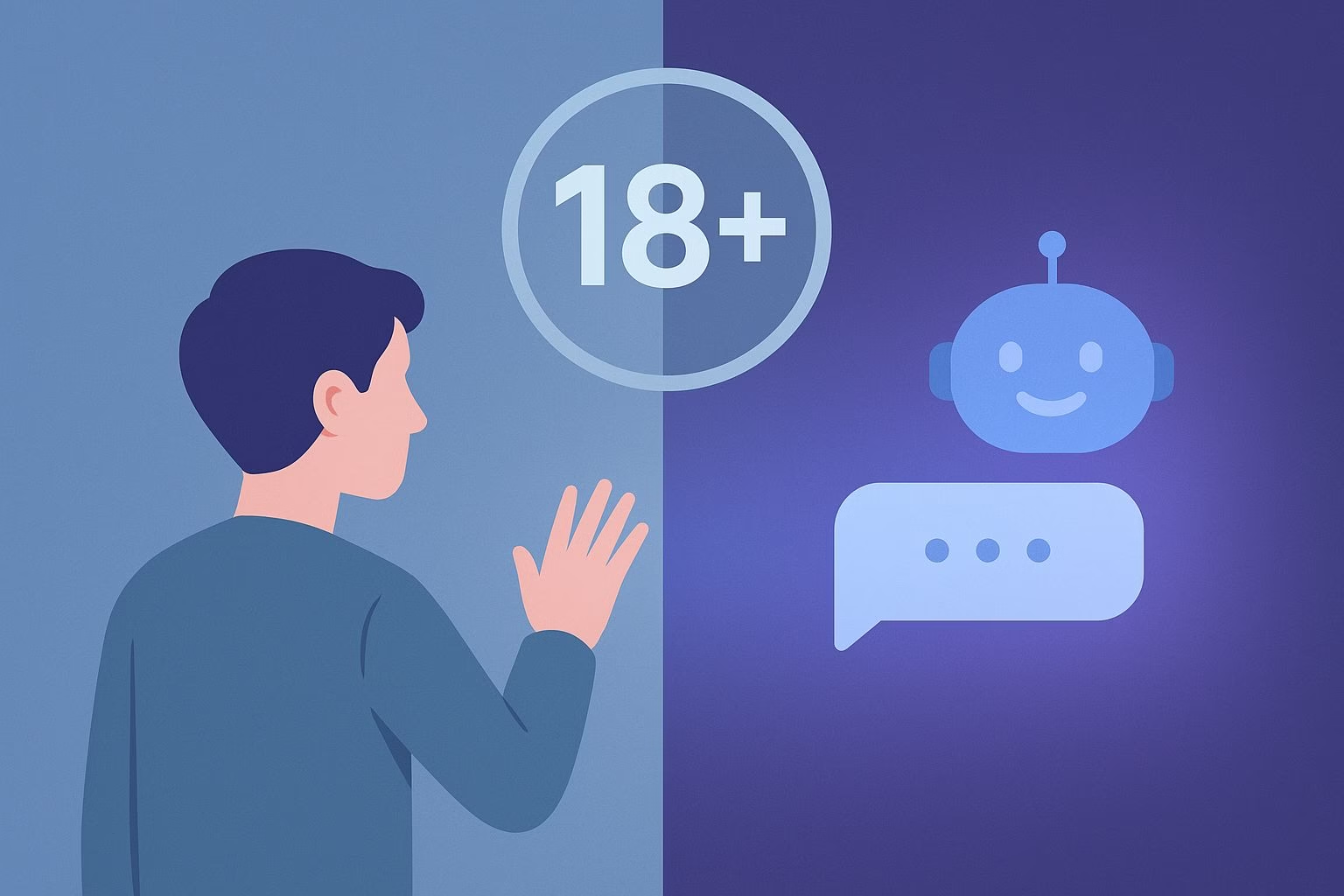How Character AI’s 18+ New Policy Works
Character AI is back in the spotlight after major news outlets reported that the app will now restrict users under 18 from chatting with AI characters.
What started as a small announcement quickly grew into one of the most heated discussions the AI community has seen.
The decision surprised many long-time users. Some saw it as a logical move after the lawsuits involving minors, while others felt it punished everyone for the actions of a few.
The new policy introduces what Character AI calls the “under-18 experience,” which removes chatbot conversations entirely and replaces them with limited features like stickers, audio playback, and creative tools.
Reactions on Reddit show a clear divide. Teen users say it feels unfair, especially for those who used the app responsibly.
Adults, on the other hand, point to how easily people of all ages become emotionally attached to AI and argue that these restrictions might actually prevent future harm.
The change also signals something larger. It marks the first time a major AI chat platform has drawn a strict age line, forcing others in the space to reconsider their policies.
Why Character AI Introduced the 18+ Restriction
Character AI’s new policy didn’t appear overnight. It followed months of rising tension around lawsuits, public complaints, and growing unease about how minors were using the platform.
One lawsuit in particular claimed that a teen’s interaction with a chatbot contributed to their declining mental health. That single case shifted public attention and made age verification a legal priority.
Developers were faced with two choices: tighten restrictions or risk getting banned from app stores. They chose the first option.
The rule now requires users to verify their age through a three-step process. First, the system checks your data across cookies and linked accounts. If it cannot confirm your age, it asks for a selfie, and finally, an ID if the other steps fail.
The logic behind the move is simple. Once a platform hosts conversations that can touch on emotional or mature topics, it becomes liable for what minors see.
By cutting off direct access, Character AI hopes to protect itself from further lawsuits and present itself as a responsible AI company.
Still, this comes with heavy backlash. Many users argue that the restriction feels extreme, especially since other platforms handle age gates with more flexibility.
Some believe the company could have filtered explicit chat styles or added parental controls instead of a total block. Others see it as another sign that big tech companies care more about legal safety than user trust.
What the Under-18 Experience Actually Includes
Character AI moderators outlined what minors can still do after the change. While direct chatting is disabled, several creative tools remain open.
Here’s what stays available:
-
Character Feed and Stickers – Users can view content shared by others and react with stickers.
-
Imagine Chat – Allows minors to create AI-generated snippets from previous chat messages, though they cannot respond interactively.
-
Audio Playback – Lets them listen to a character’s recent responses.
-
AvatarFX – Used for customizing AI character visuals.
-
Author a Scene or Create Streams – Offers limited creative writing tools disconnected from live chatbot interaction.
Many community members feel these features don’t reflect the core purpose of Character AI, to talk to AI characters.
One commenter summed it up: “What’s the point of being on a chat service if you prevent us from chatting?”
For minors who once used Character AI to explore writing, emotional expression, or roleplay, this change effectively ends their experience with the app.
Still, some adults in the discussion believe it’s a necessary boundary given how addictive chatbot use can become for developing minds.
Privacy and Data Collection Concerns
One of the biggest worries surrounding this new rule is the requirement to verify identity. Many users are uneasy about uploading a selfie or a government-issued ID to a chatbot service.
The concern is not only about trust in Character AI itself but also in the third-party verification systems that handle this data.
Once personal details are shared, users lose control over where that data ends up or how securely it is stored.
The verification process collects information through multiple layers. Cookies, device identifiers, and linked accounts form the first level.
If that is not enough, a photo or an ID may be required.
Even if users can redact certain details, the fact that the process involves any form of government identification raises alarms about potential leaks or misuse.
These fears are not without precedent. Other platforms that introduced similar verification systems have suffered data breaches in the past.
Critics argue that Character AI’s move might set a dangerous precedent for how personal data is handled across the AI companion industry.
Users who once saw AI chats as a safe space for creativity now feel exposed by the requirement to prove who they are.
The company insists that it collects only the minimum data necessary to confirm age. Public confidence, however, has been shaken.
For many, the risk of personal information being stored or compromised outweighs the benefit of continued access. As a result, a growing number of users are choosing to leave rather than submit to these checks.
Best Alternatives for Users Affected by the Ban
The sudden restriction has driven many people to search for new platforms that still allow open and private AI chats.
Several AI companion services have seen a sharp increase in sign-ups over the past few weeks as former Character AI users migrate elsewhere.
Two options stand out for users looking for unrestricted conversations and better privacy control.
-
Candy AI offers unlimited chat sessions and an adult-friendly experience. Candy AI does not require ID verification and allows users to create or customize characters freely. It has become one of the most popular destinations for people who want full creative control without strict content filters.
-
CrushOn AI provides a similar setup but focuses on emotional and narrative-driven interactions. It appeals to users who prefer deeper storylines and consistent AI memory, something many feel Character AI lost with recent updates.
When moving to any new chatbot platform, it is wise to check what information they store and how they handle privacy.
Even if they promise full anonymity, reading the fine print is essential. A responsible user should always review the terms before uploading personal data or starting long-form chats.
These platforms may not replace the exact feel of Character AI. Still, they continue to represent what many users loved most about it: open dialogue, emotional realism, and creative storytelling.
How Character AI’s Policy Shapes Its Future
This policy marks a turning point for Character AI. It shifts the platform from being an open social AI space to a more tightly controlled product shaped by safety concerns and legal risk.
The change signals that Character AI is now focusing on compliance first, creativity second. For a company once known for community-driven expression, that direction feels like a major transformation.
Restricting minors may reduce legal exposure, but it also removes a large part of the user base that helped the app grow in the first place.
Many of the most active creators were teenagers who used the platform for roleplay and writing. Losing that audience could affect how much new content appears in the feed and how long casual users stay engaged.
This could also reshape the tone of the entire community. Adult users who remain on the app may see a quieter, more moderated environment with fewer creative experiments.
On the other hand, it might lead to higher-quality interactions and fewer moderation problems. The real test for Character AI will be whether it can rebuild trust with users who now feel restricted or watched.
If the company manages to address privacy fears and maintain creative depth for adults, it could still recover its reputation.
Otherwise, the ongoing debate around data handling and censorship may define how users remember this shift.


